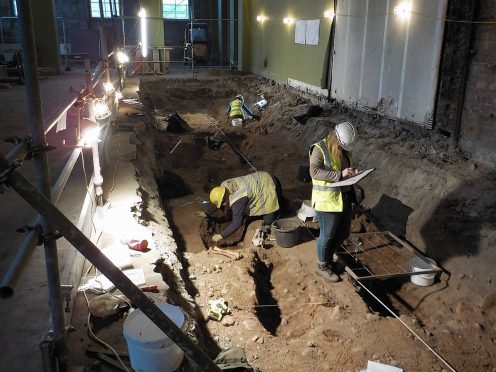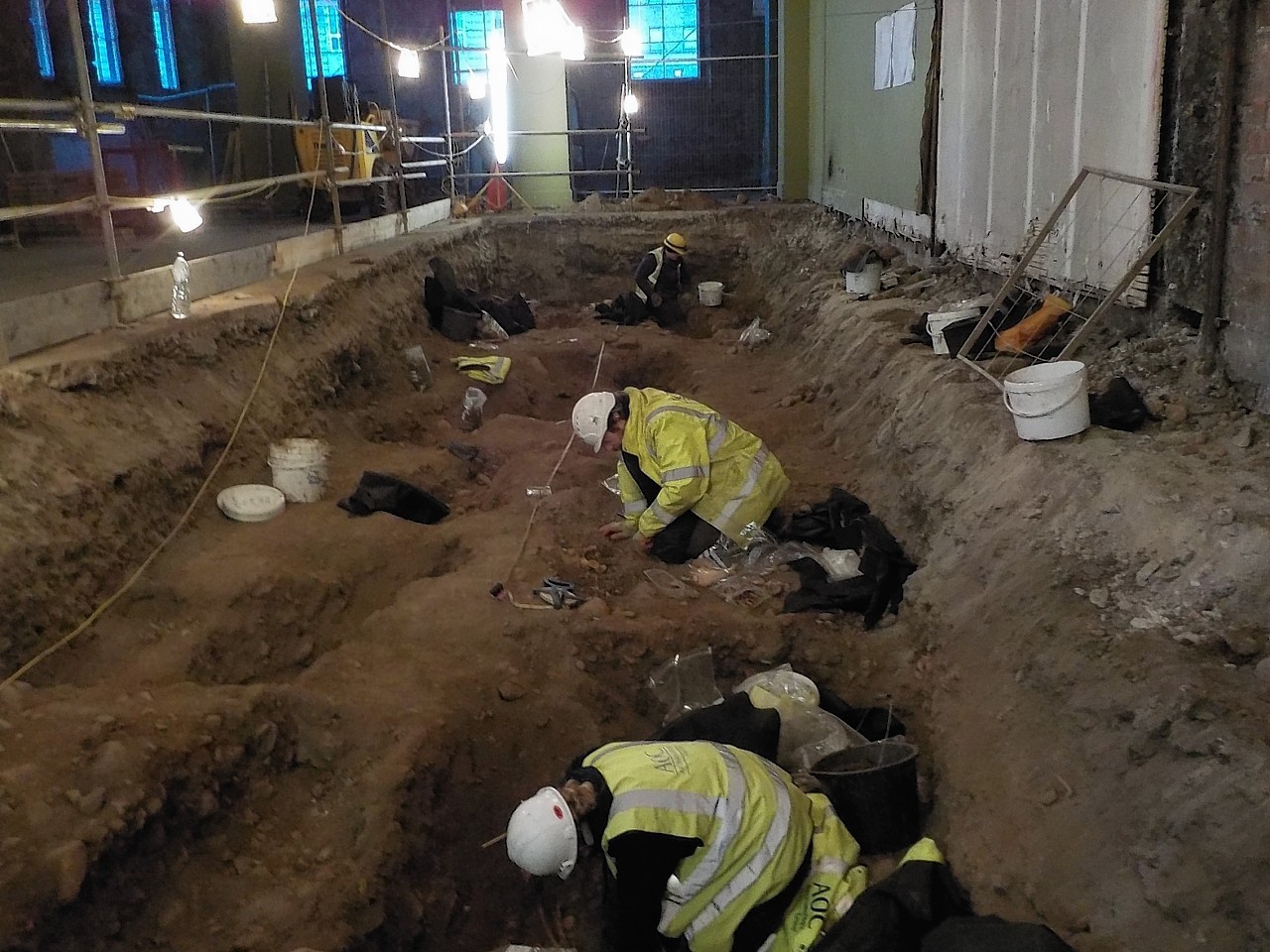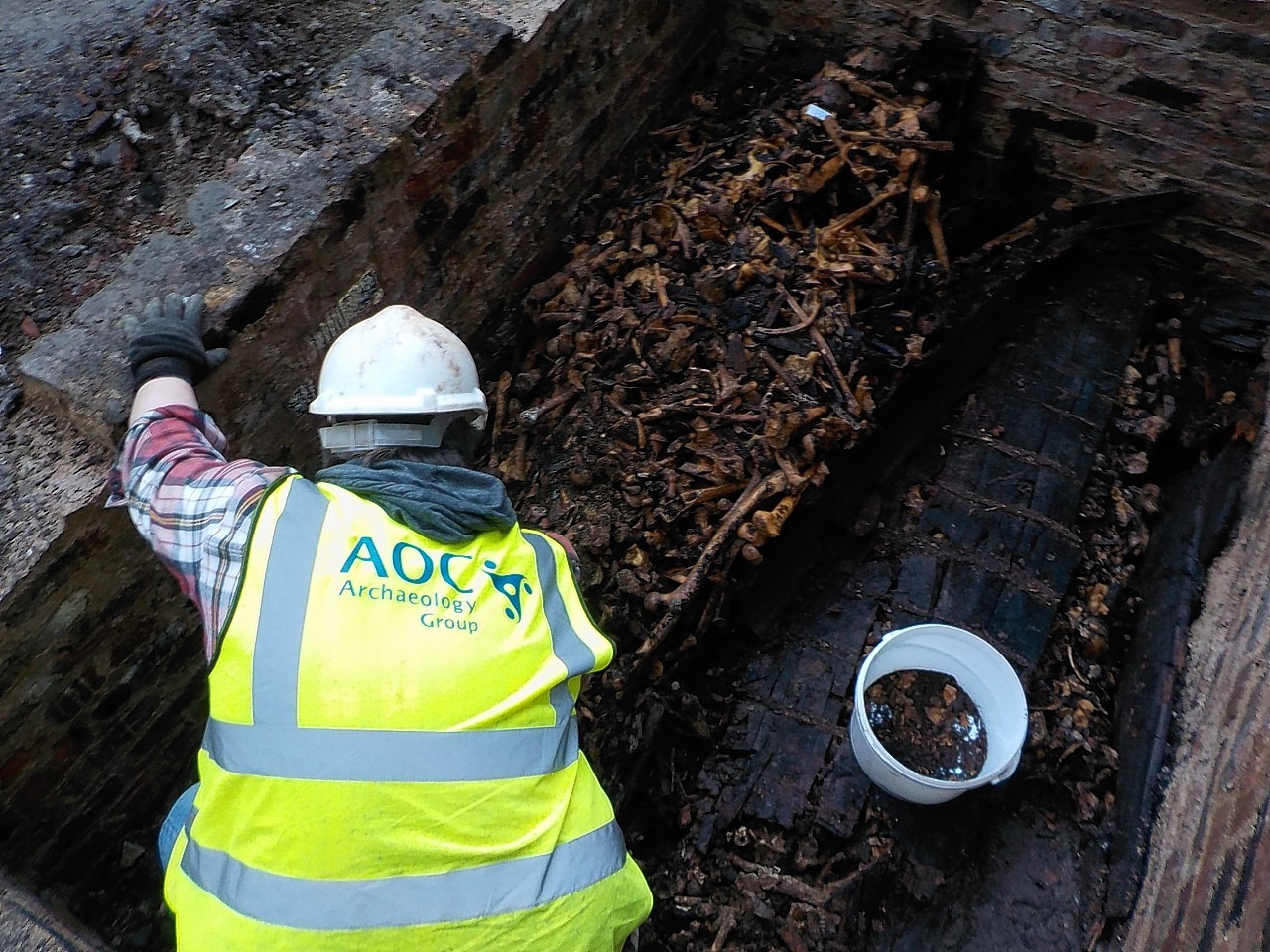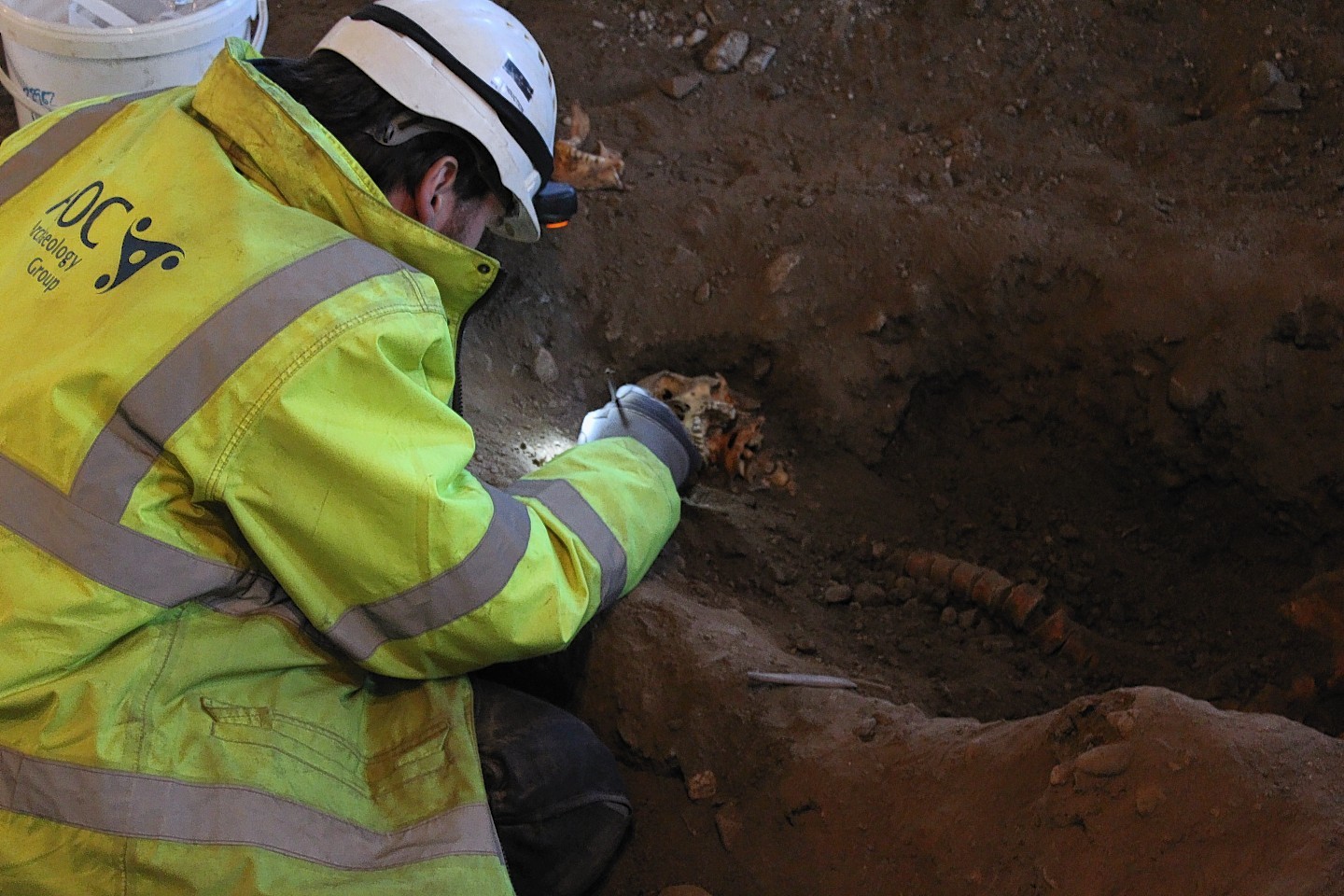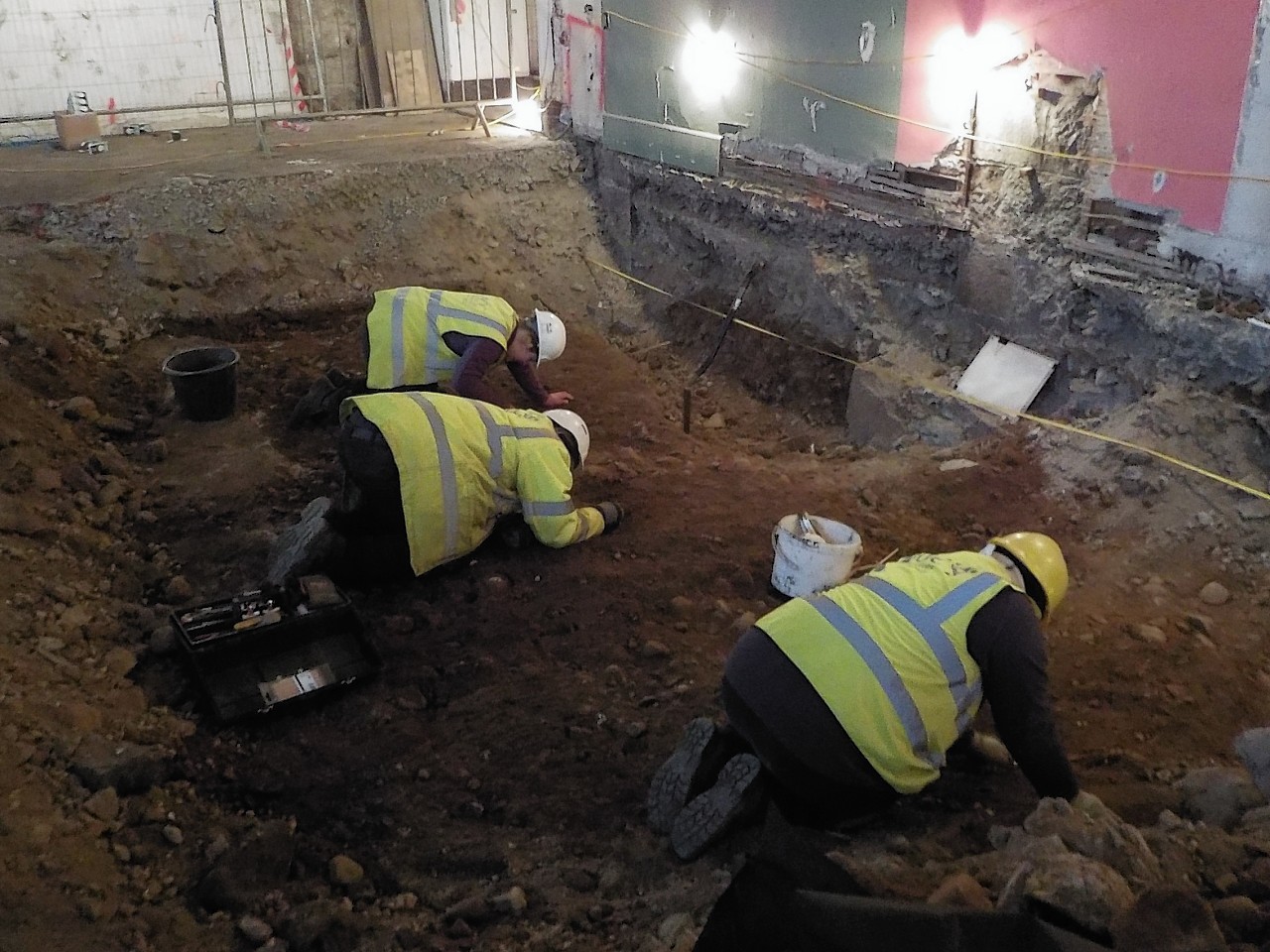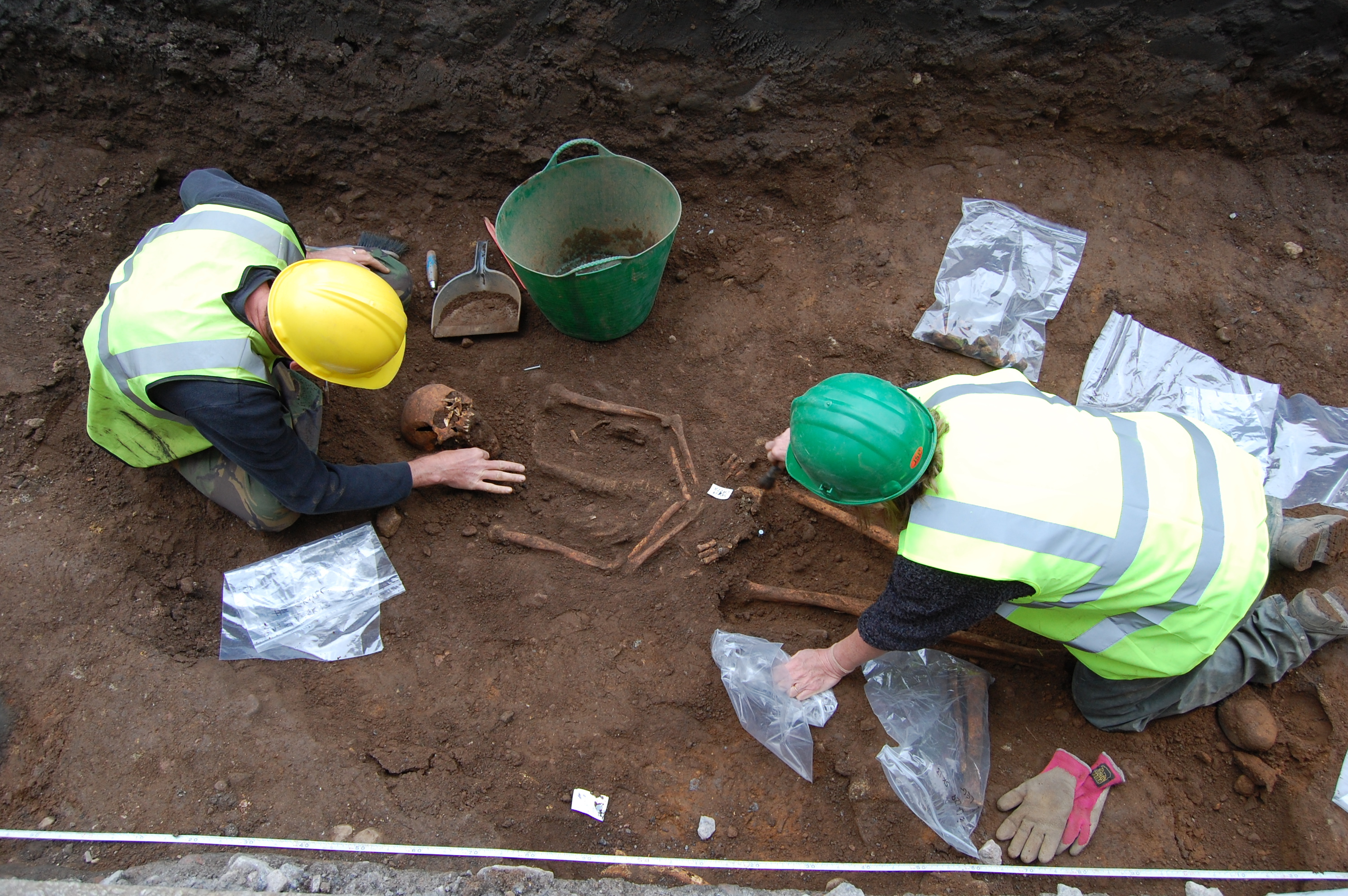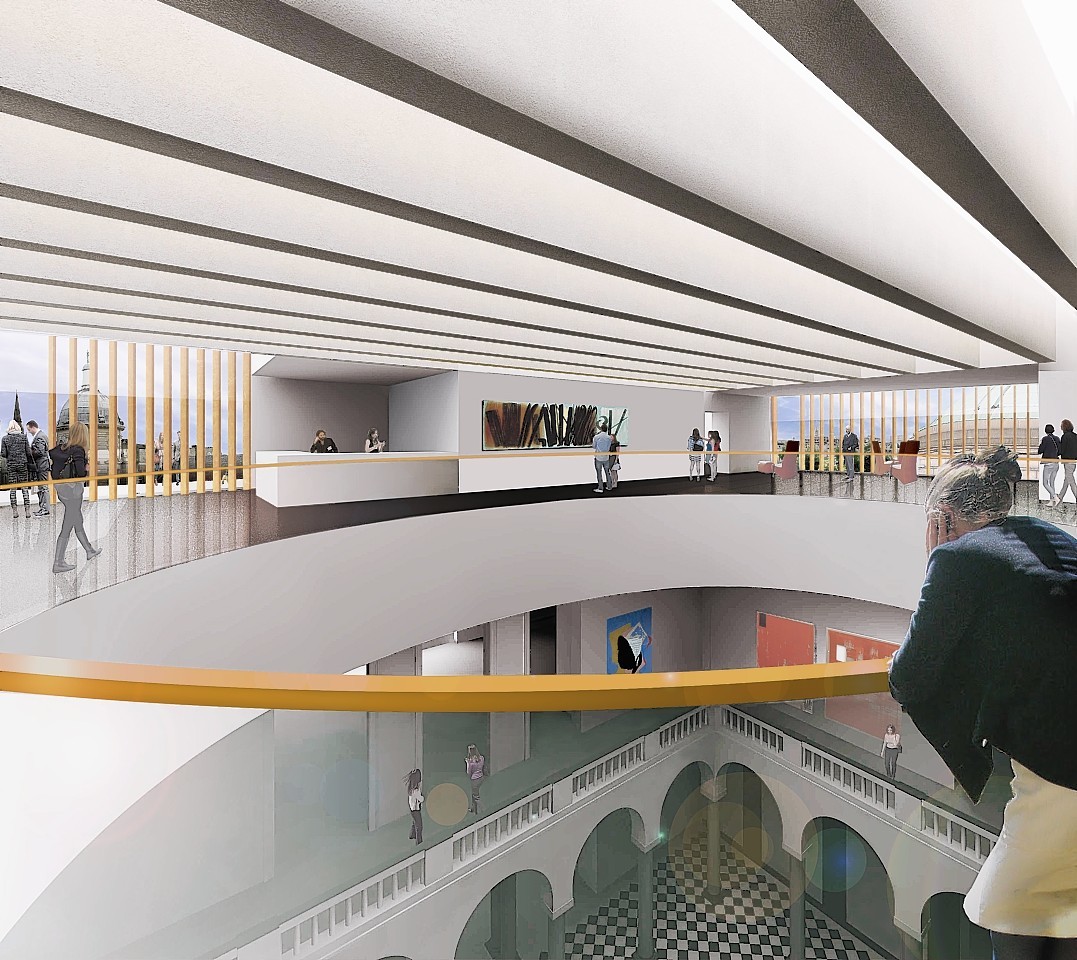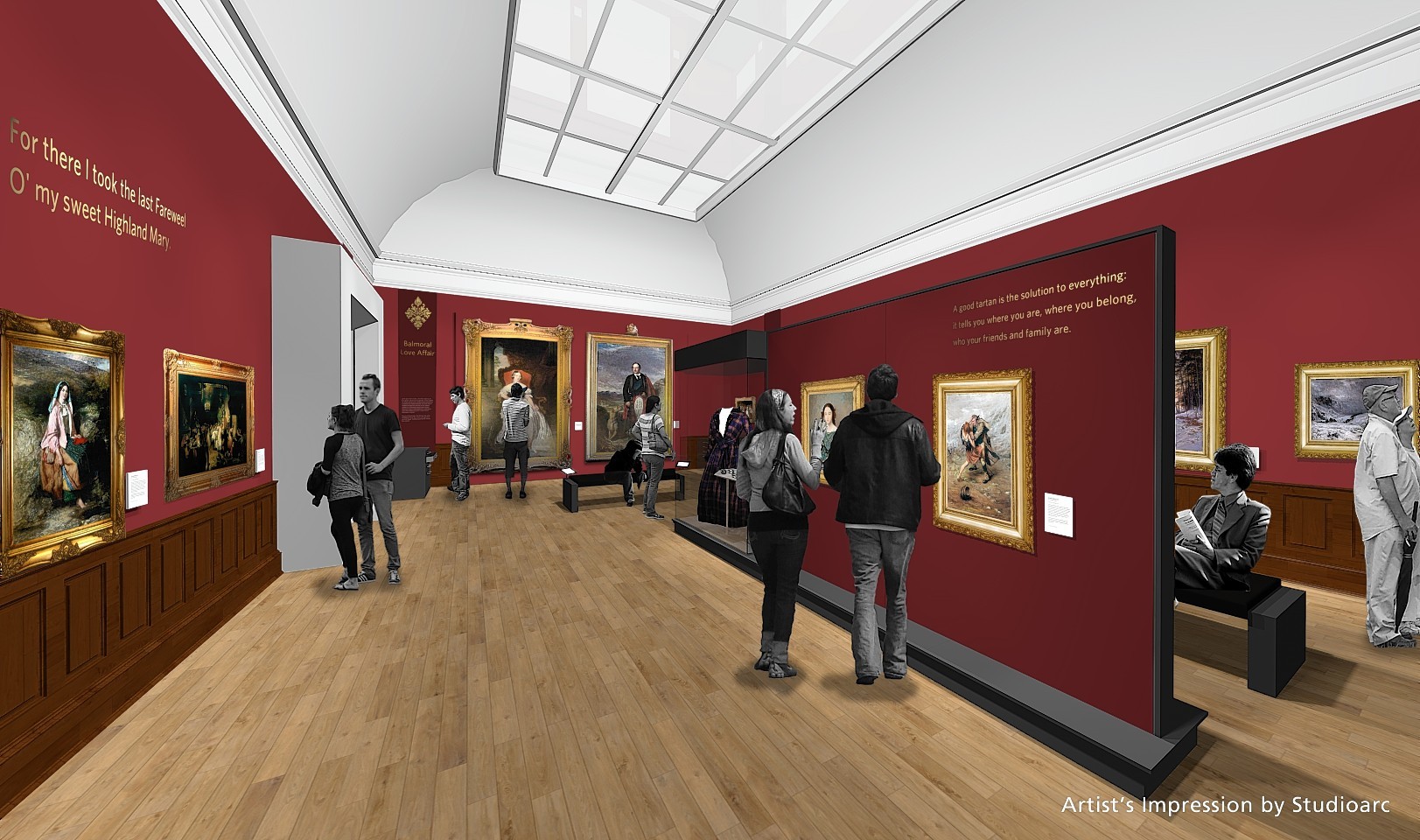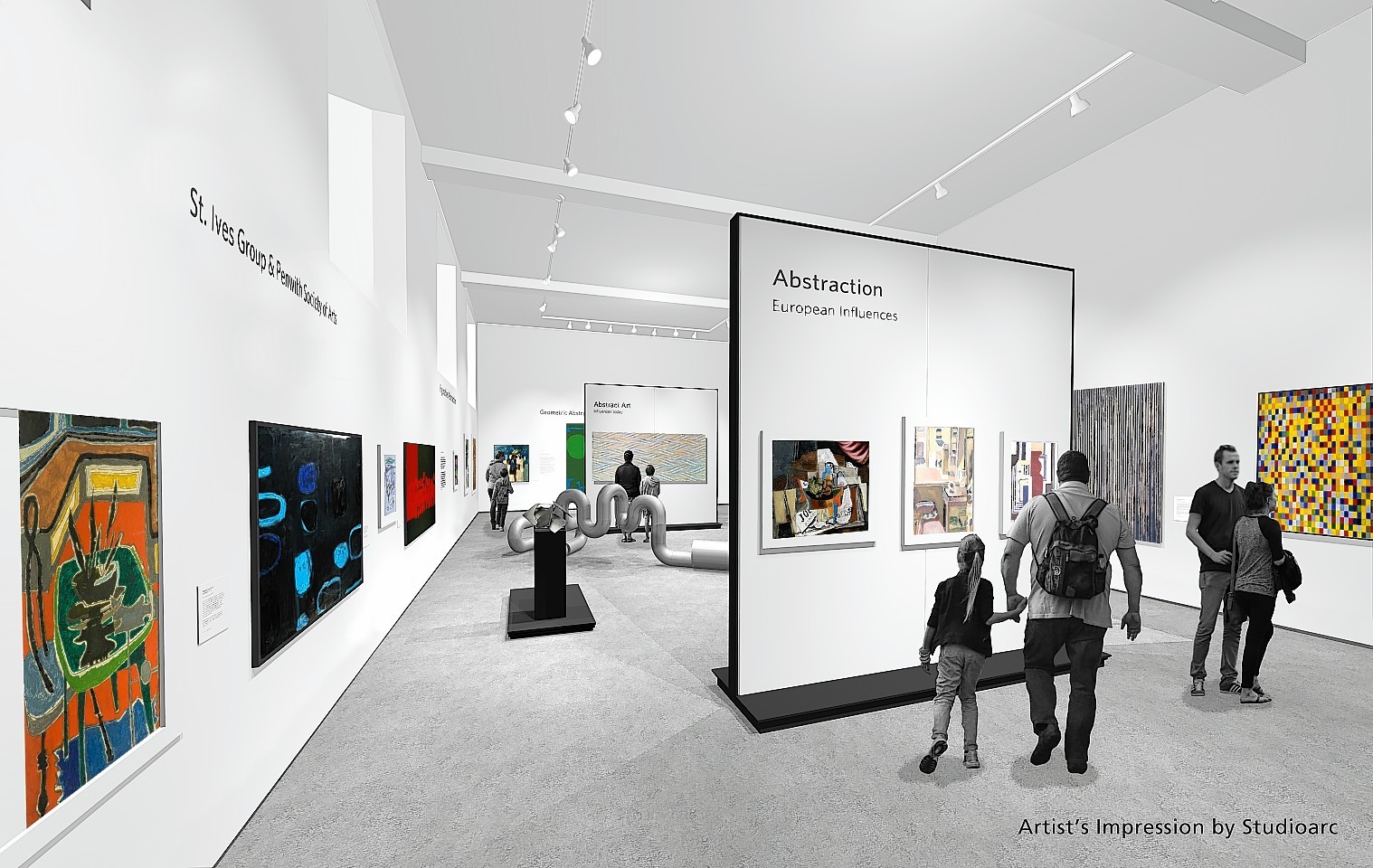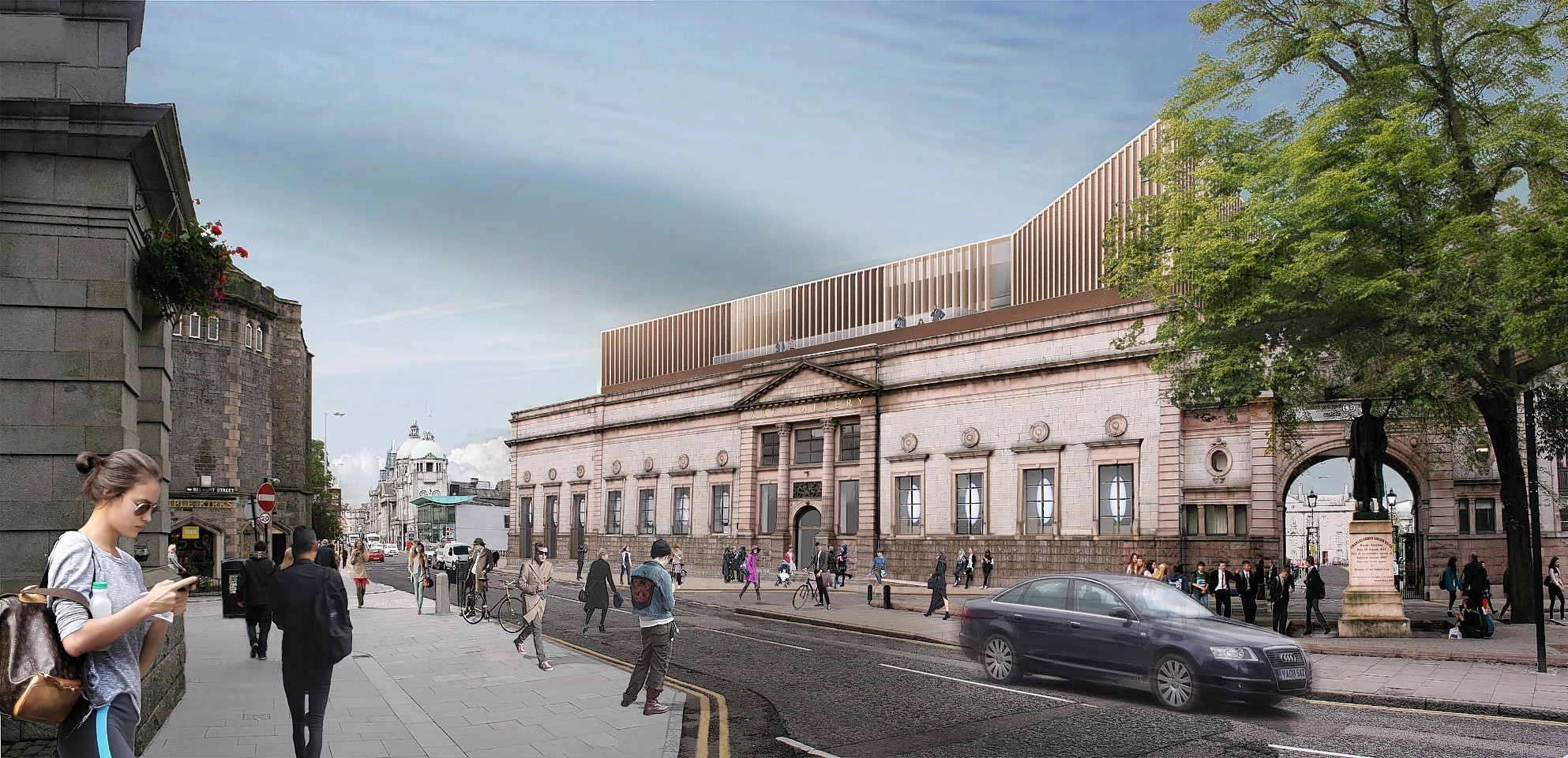Nearly 100 skeletons have been found in a “medieval cemetery” below one of the Granite City’s most iconic buildings.
While painstakingly carrying out excavations for the £30million renovation of Aberdeen Art Gallery, archaeologists have discovered the assorted remains of at least 92 bodies dating back to the 13th century.
The incredible find comes just months after 30 skeletons from the same era were discovered by workers at the nearby Robert Gordon’s College.
And the team – who are still extracting more bones, artefacts and other historical treasures from the site – believe their discovery to be some of the clearest evidence yet that the Schoolhill site is the location of Blackfriars Abbey, founded at some point between 1230 and 1249.
The art gallery is currently being transformed into a cultural centre, featuring a rooftop gallery and modern concert hall, but due to the importance of the site within the “medieval heart of the ctiy”, archaeologists have been supervising the work.
Last night they hailed the discovery of the remains as “hugely significant”.
After discovering initial signs of a burial site, the archaeologists – led by project manager Martin Cook – discovered a huge quantity of loose, assorted bones crammed into three wooden coffins below the back of the premises, which they believe to be the remains of at least 40 people.
The three coffins were discovered to have been placed within a brick-built chamber, or charnel house, which suggested to the team that the bodies had been uplifted, packed away and re-buried in the 19th century, possibly ahead of the development of the art gallery in 1884.
And beneath the gallery itself, they discovered a total of 52 human skeletons, with indications they had been laid to rest in coffins, within their own graves.
Mr Cook, of AOC Archaeology, said he and his colleagues were shocked to find so many bodies in one place.
He said: “We were hugely excited, discovering anything like this is exciting for us archaeologists but when it’s clear evidence of a mediaeval cemetery it’s very interesting.
“We think this site is the same burial ground or cemetery as the site previously excavated at Robert Gordon’s, it could very well be attached to the Blackfriars site.
“It’s hugely significant to find a medieval cemetery like this, because you rarely find them in Scotland.
“The post-excavation will be hugely important to shine details on the population of Aberdeen in the 13th and 14th centuries, DNA analysis could tell us if there were any foreigners in the city at this time, and the pathology of the people – what diseases they had, and all sorts of things.”
Jason Finch, curator of archaeology and maritime history for Aberdeen Art Gallery and Museums, added: “The finds are an exciting mix that adds to the story of a medieval Aberdeen and everyday life in it. By examining the burials, we can learn about the lives people led and the injuries they suffered.”
Due to the discovery, the redevelopment of the art gallery will be delayed by six weeks to allow the archaeologists time to exhume and organise the bodies, as well as the dozens of other relics unearthed, which include coins, scraps of clothing and ceramics.
Last night Aberdeen historian and author Diane Morgan welcomed the discovery.
She said: “It’s really special, but also very logical that they have discovered a cemetery here as Blackfriars was a very busy abbey, and you would have had to have put the dead somewhere.
“It really is a fantastic find.”
It is understood the remains will be given a Catholic reburial once they have been thoroughly examined.
